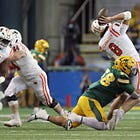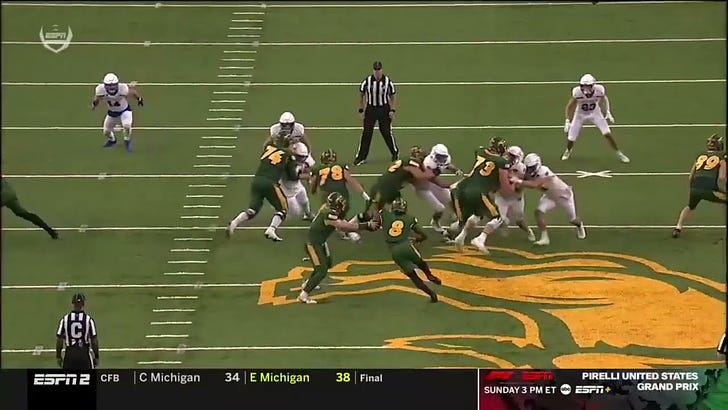The Defensive Blueprint Behind North Dakota State’s Victory
The FCS Championship provided a fitting conclusion to an incredible season at the FCS level. North Dakota State delivered a dominant defensive performance in the first half, stunning fans and pundits alike. While they allowed 29 points in the second half—7 of which came in garbage time—the defensive intensity they displayed early certainly gave them the cushion they needed to leave victorious. In this article, we’ll break down how NDSU stifled the Bobcats’ offense and what lessons can be learned from their game plan.
Related Content: FCS National Championship Preview
Tackling
One of the keys to the Bison's success was their ability to limit runners, excluding Tommy Mellott, to fewer than 3 yards per carry. Time and again, the Bison showcased impressive open-field tackling. It felt like the Bobcats were on the verge of breaking off big plays several times, but NDSU’s defenders consistently made the stops when it mattered most.
Additionally, the Bison excelled at incorporating their defensive backs into run fits, particularly their corners. While one play resembled corner pressure, it was more likely “Trap” coverage with an aggressive run-fit responsibility. And guess what? These corners proved they could tackle, stepping up to make plays at the line of scrimmage.
Combating Outside Zone & Variations
The Bison countered Montana State’s outside zone run game with a variety of tactics, all centered around one key theme, defensive play.
NDSU’s first example of this approach came through a standard 5-man pressure involving defensive line slants. In this instance, Montana State struggled to account for the 2i and 5-tech as they crossed face, leaving the offensive line visibly confused and unable to execute.
This play highlights an excellent example of NDSU’s defensive end squeezing the backside on outside zone, effectively spilling the slicer and making the tackle on the cutback. The Bison consistently mixed techniques throughout the game, alternating between chasing and spilling or surfing, keeping the Bobcats’ offense off balance.
In this example, NDSU’s linebackers did an excellent job reacting to Montana State’s YY action by rocking back, while the safety inserted perfectly to handle the cutback. The critical element here was the shade winning his gap, which forced the pull and disrupted the backfield.
Related Content: Defending Montana State's Q Run Game
Remember the earlier discussion about squeezing? Here’s a great example of the NDSU defensive end using a surf technique. He stays square, closes the gap, and then flattens down the line to make the tackle.
This clip showcases a “Ton” stunt executed by the Bison. #50 does an unbelievable job using violent hands on the pick to knock over the center and secure the tackle for loss. The physicality displayed by the defensive tackle on this play is nothing short of dominance.
Firezones
Traditional 3-under, 3-deep fire zones gave the Bison defense the ability to play with an 8-man box against Montana State’s versatile outside running attack. On multiple occasions, the safety spinning down into the box became the free hitter.
Related Content: Bison Blitzes and Stunts
Simulated Pressures
Although the simulated pressures came late in the second half, they’re still worth highlighting. On two occasions, NDSU brought corner pressure paired with a “Non-Traditional Tampa” (NTT) coverage. I expected to see more of these calls throughout the game, as defensive backs were well-suited to track down an explosive quarterback while maintaining sound coverage behind the rush.
Related Cutup: North Dakota State | NTT Coverage | 2024
Conclusion
While North Dakota State’s defense delivered a standout performance in the first half, they weren’t flawless on the night. Montana State found success later in the game, primarily through the air and on a long Tommy Mellott touchdown run. However, it was the Bison’s dominant first-half defensive effort that provided the crucial cushion they needed to secure the national championship against the Bobcats.








